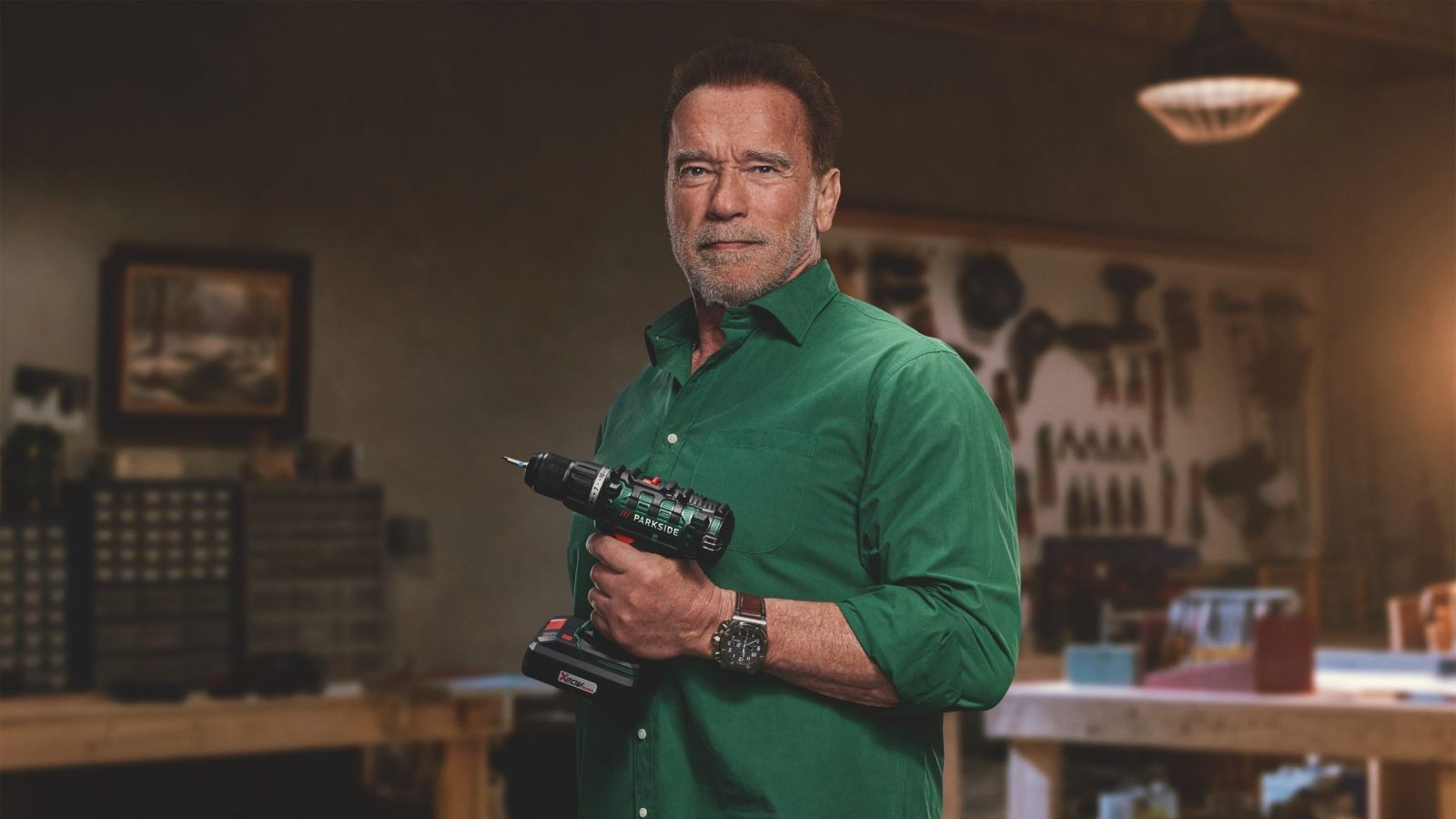Could sliding patio doors be the smooth, sleek glazing option you need for your home extension or renovation?
Offering abundant light, slender sightlines and ease of use, it’s not surprising sliding patio doors are a firm favourite. Here's how to choose the right ones

When embarking on a new self build or extension, the patio doors you choose to the outdoors are crucial to the success of the project.
With larger glazed panels and narrower frames than their bifold and French door counterparts, it’s easy to see why sliding doors are one of the firm favourites when it comes to accessing your garden.
Not only do they maximise natural light and offer the best view of any glazed door system when closed, they also offer an abundance of additional features that other doors can’t match. We explore styles, options and all the factors you need to consider when buying sliding patio doors.
Types of sliding patio doors
There are two common styles of sliding patio doors, lift-and-slide and in-line.
In-line, where the doors run along a recessed double or triple track, have very slim sightlines, but can only be locked for security when the doors are in a fully closed position.
"In-line sliding doors are much easier to operate than lift-and-slide doors," says Rebecca Clayton, director of IQ Glass. "In some cases the mechanisms for lift-and-slide doors can be cumbersome whereas linear sliding doors unlock and slide simply and are sometimes much more suitable for those with mobility difficulties."
Lift-and-slide doors can be anchored in place at any point along the track thanks to handles that allow each panel to be lifted up (to slide) or dropped down (to be anchored/locked). They also have flat-topped tracks, which means there is no trip hazard and nowhere for leaves, dust and debris to collect.
Bring your dream home to life with expert advice, how to guides and design inspiration. Sign up for our newsletter and get two free tickets to a Homebuilding & Renovating Show near you.
"For many, lift-and-slide doors have faded out of relevance as the mechanisms required to lock the lead door in place when the panels were open made the frames chunkier and the doors heavier," says Edward Stobart, technical sales director at IDSystems.
"There is still the occasional use where the functionality comes in handy, particularly when installed on first or second floors in bedrooms with no other windows, but for almost all other applications customers have prioritised design aesthetics and ease of operation over what lift-and-slide doors provide."

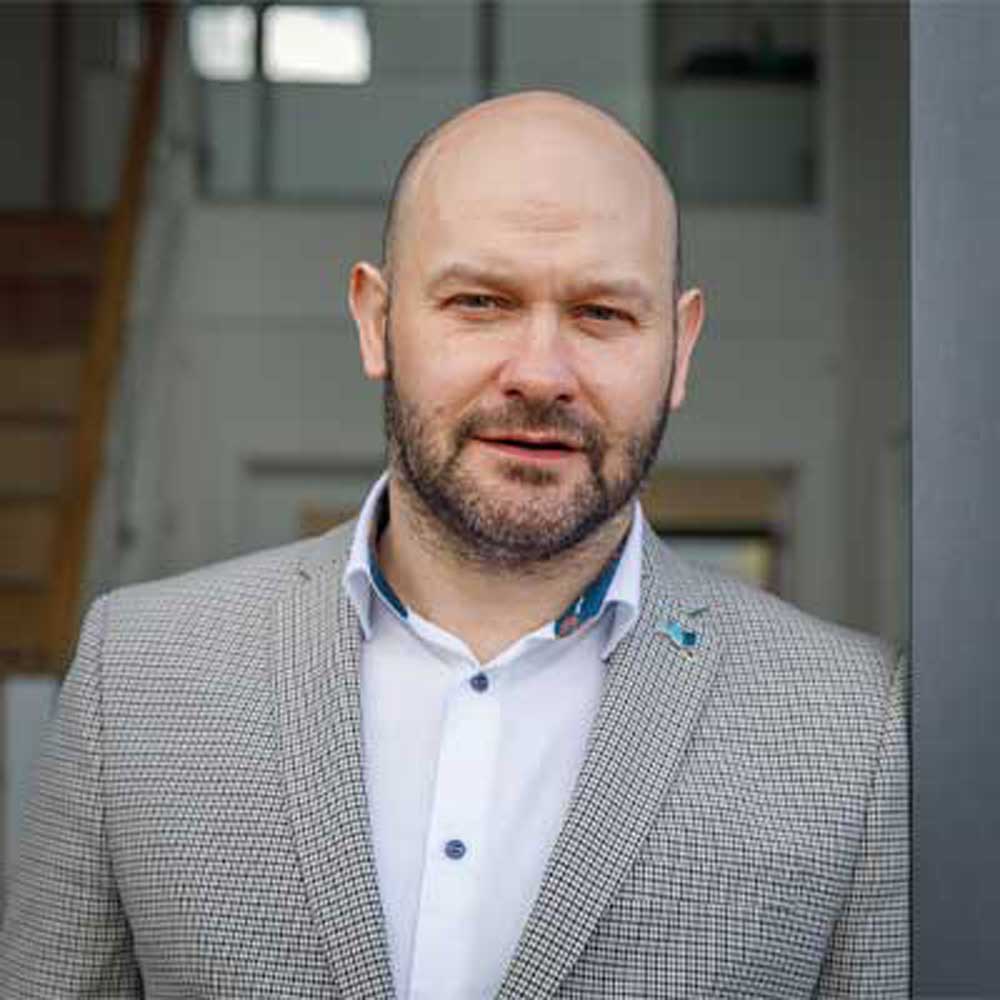
A long serving member of the IDSystems team, for the past 20 years Edward has advised and supported self-builders and renovators to identify the most suitable glazing options for their project. He has recently finished a complete renovation and remodel of his own home, transforming a tired 1960s house into a stylish modern family home. His expertise ensures that each project is equipped with cutting-edge, bespoke glazing designs that enhance both functionality and aesthetics.
The growing trend for open corner and pocket door styles
One of the fastest growing sliding patio door trends however is the open corner design. "Corner sliding doors open up a full corner of a room leaving no framework or posts in the way, giving a sense of space and maximising natural light," says Matt Higgs of Klöeber.
"They add a striking feature to your home and seamlessly connect indoor and outdoor space to dual aspects.’"You should first discuss the possibility of installing these with your door supplier, architect and a structural engineer.
To maximise the glassless area, you can incorporate pocket doors if you have a suitable length of wall for the sliding door to retract into. "When a sliding door slides away into a pocket you end up with a fully open doorway. This maximises the opening to the outdoors and improves the flow of movement from inside to out," says Steve Bromberg, MD of Express Bi-Folding Doors.
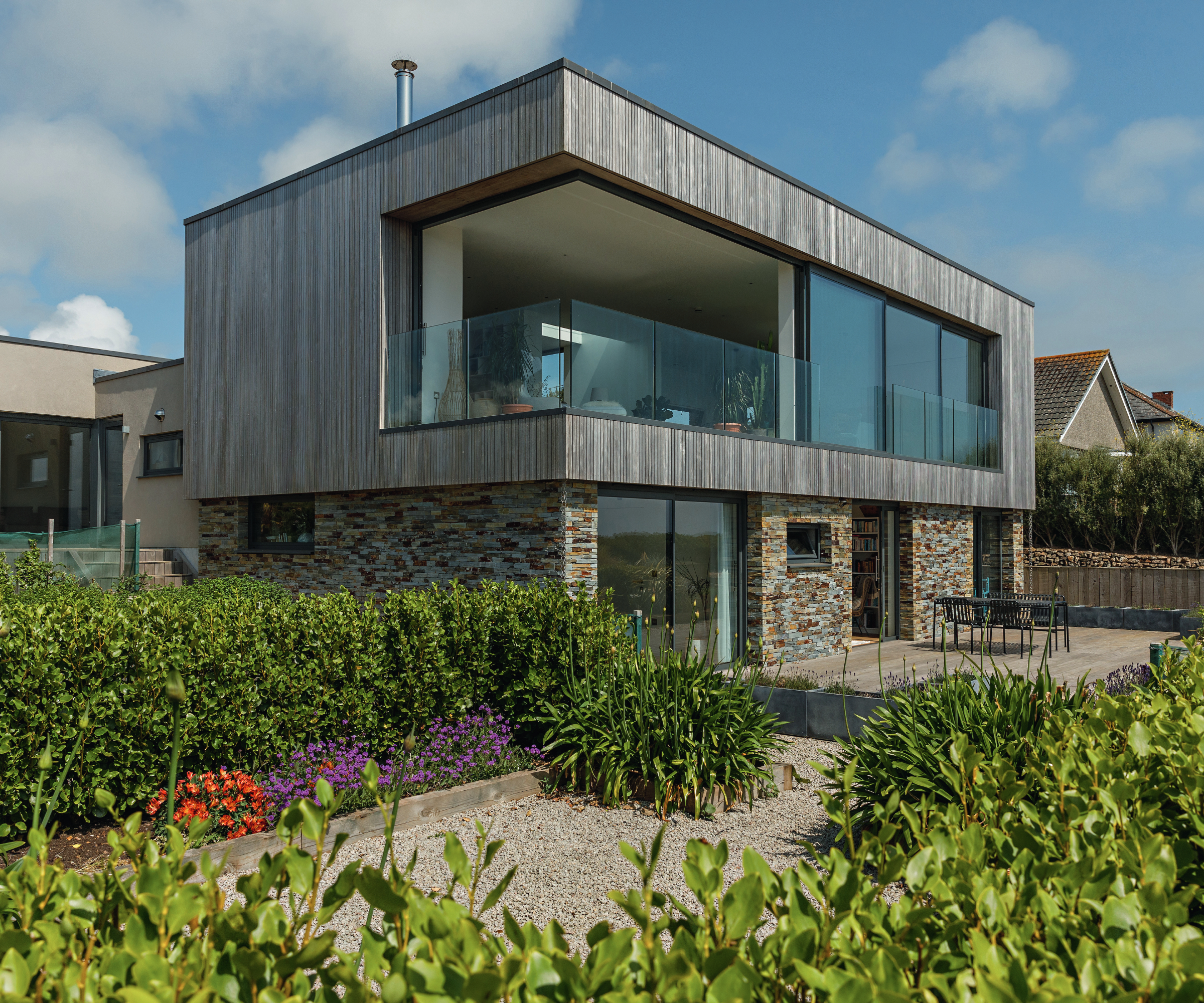

Matt is the Managing Director of Klöeber, providing bespoke doors and windows to self-builder's and architect's nationwide.
Size and configurations
Sliding doors are available with much bigger panel sizes than bifold doors – some are available with panels of up to 3500mm in both height and width. It’s also possible to feature them in ultra-wide configurations of up to 24 metres in length.
When it comes to choosing a configuration for your sliding doors you will need to take into account the size of the opening you are fitting them into and how you want to use your new patio doors.
Sliding doors can be configured in lots of different ways – from a single panel up to eight or more. Depending on the number of panels you opt for and the design of your home, they can all slide in the same direction, or away from one another in the case of double sliding doors, or away from a corner to open up a house completely.
Sliding patio doors can also be installed to slide along a wall, or even into a pocket in the wall. There will also usually be one or two fixed panels within a sliding door configuration too.
"Three-panel sets have become the most popular because they allow for a two-third opening when the doors are slid back, having minimal impact on the view out when closed," says Edward Stobart.
"Deciding on the number of panels in a sliding door is down to personal choice, your room’s layout and what can be accommodated by the system you choose," says Jonny Story, residential market manager at Schüco UK.
"A key consideration is the depth of your walls – a three-panel sliding system requires 50% more depth than a two-panel system so sometimes this can be a limiting factor, particularly with a renovation project."
Fewer panels tends to mean less visual interruption, according to Jonny Story. "Schüco offers sliding doors with panels as wide as 3.5 metres, so even if you have a huge space spanning seven metres you can choose to have only two sliding panels. The panels will be heavy but the system’s precision engineering means you will be able to glide them open and closed effortlessly."
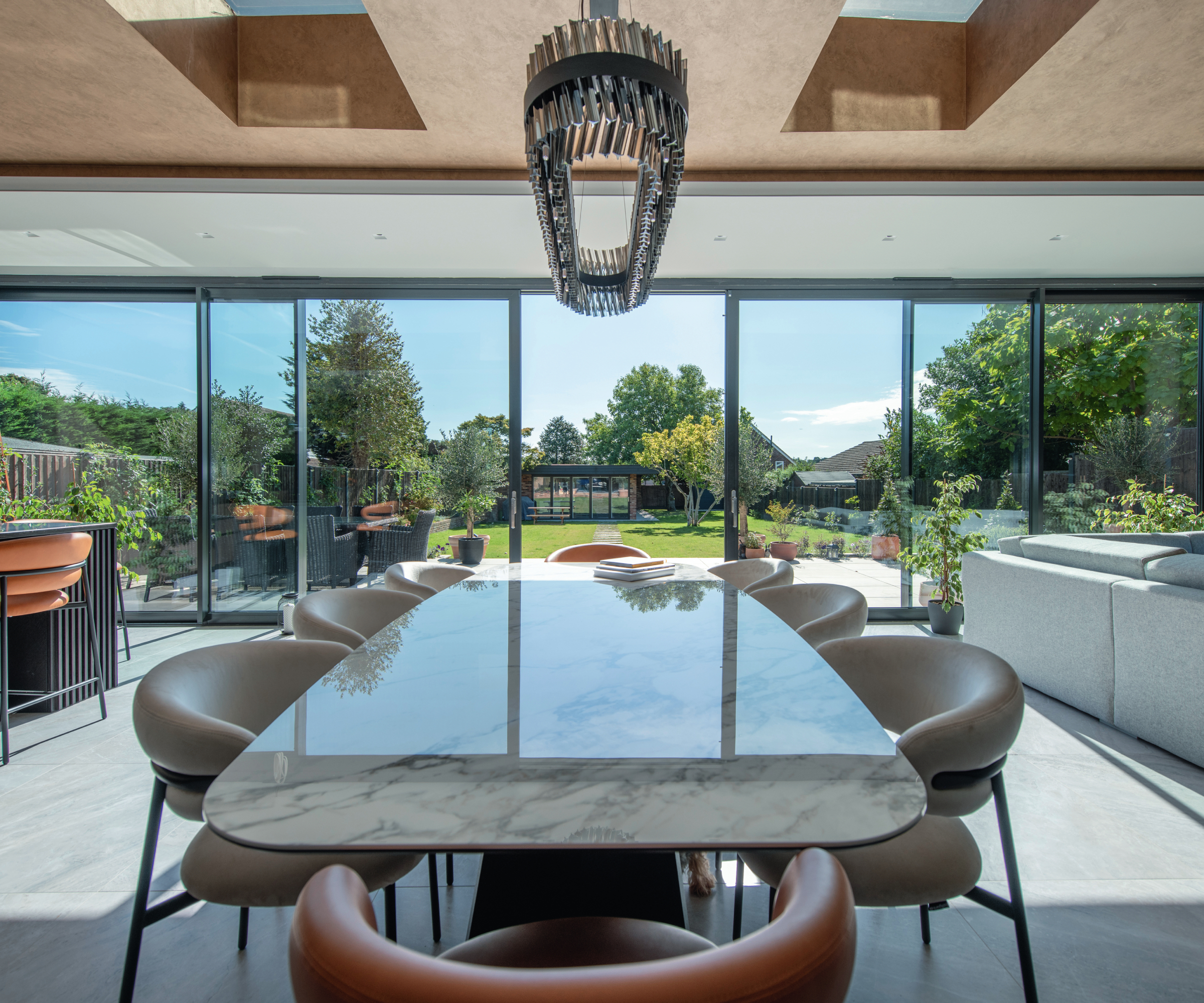
Frame and material options
When it comes to deciding on your frames, there’s a surprisingly wide variety of choices so it’s important to assess the quality of each and its suitability for your project.
One of the considerations should be thermal efficiency, as with such large expanses of glass, sliding doors are at risk of making rooms hot in the summer and cold in the winter if they don’t offer strong thermal performance.
There is a misconception that aluminium is not energy efficient; in fact, thermally broken aluminium (where a polyamide plastic insert separates the internal and external aluminium profiles to prevent condensation and increase insulation) is extremely energy efficient.
Ask your supplier about U values, which is the measurement of heat loss through the system – the lower the value, the better. For new-build properties, doors and windows must not exceed a maximum U value of 1.6 W/m²K in England, Northern Ireland, Scotland and Wales. For domestic replacements, the maximum U value for doors and windows is 1.4 W/m²K.
There are five main choices when it comes to the frame options you'll need to consider when buying sliding patio doors:
- uPVC doors are typically the cheapest option, but can lack strength, expand and contract in adverse weather and are more easily damaged. The lack of strength also means the frames have to be thicker to support the weight of the glazing.
- Timber is a popular choice for heritage properties and has acoustic softening properties, but wood can warp and twist due to changes in temperature and humidity. It also requires ongoing maintenance to ensure the material remains in good condition.
- Aluminium is lightweight and strong, meaning it can easily support large expanses of glass with minimal frames and slim sightlines for a sleek aesthetic. Powder-coated finishes also offer a durable, low-maintenance surface.
- Steel is heavy and therefore only tends to be used on bespoke sliding door designs with automation.
- Composites such as Alu-clad offer the best of both worlds with an engineered timber interior and a thermally broken aluminium exterior.

Choosing the right glazing
There are many glass types available, but most sliding doors will be quoted as standard with double-glazed glass units featuring toughened glass on both panes and a ‘low-E coating’ on one of the panes to minimise heat loss.
Triple glazing offers a slight improvement in the thermal performance and acoustic performance of sliding doors but increases the weight of each unit by 50% when compared to double glazing, so powered lifting equipment may be required during installation.
Here are other popular glazing options:
- Solar-control glazing significantly reduces the solar heat transfer from the outside of a property to the inside and is particularly useful at reducing the heat build-up inside a south-facing room. However, when viewed externally, solar control glass looks darker and more reflective than standard glass and therefore can look mismatched when the two types appear together.
- Tinted glass has been specially treated to reduce the transfer of heat from the sun as well as providing increased privacy during daylight hours. However, similar to solar-control glass, it looks visually very different to clear glass.
- Self-cleaning glass has a coating on the outer pane that reacts with the ultraviolet rays of the sun. The activated coating then reduces the dirt’s ability to stick to the glass and accelerates its decomposition.
- Laminated glazing is an enhanced type of safety glass that remains intact if broken.
- Acoustic glass utilises two panes of different-thickness glass in a double-glazed unit to disrupt different wavelengths of sound, which reduces the overall transmittance of sound from the outside to the inside of a property. It’s ideal for properties that are in close proximity to a busy road or train track.
Durabilty and security
The two main factors that impact the durability of sliding patio doors are the standard of manufacture and the material chosen. High-quality manufacturing ensures that every component is robust and can withstand repeated use and stress.
"Products made from superior materials, such as aluminium, which is known for its inherent strength and resistance to weathering, corrosion and warping, are also less susceptible to structural degradation over time," says Victoria Brocklesby, COO at Origin.
Choice of fittings is also a factor, says Kevan Woolf of VELFAC: "Sliding doors with simple roller sliding or lift-and-slide mechanisms usually make for the most robust functionality, and are easier to maintain over the lifetime of their installation."
Make sure your doors are fitted with the right security measures
Any doors that are fitted to new builds or conversions must be fully compliant with Part Q of building regulations, but whatever the project, if home security is top of your list of priorities, then you might consider fitting doors that comply to the above standard, which means they need to be independently tested to PAS 24 standards and installed with laminated glass.
Beware the implications of choosing structurally bonded sliding doors
"An important aspect you should also be aware of is whether or not your sliding doors are structurally bonded, as this can have implications further down the line," warns Edward Stobart.
"Structurally bonded sliding doors are where the glazing is permanently bonded or glued into the frame of the panel in order to provide the rigidity required for the doors to operate.
"It has become a popular option with some manufacturers because it is an easier way for them to make doors with ultra-slim frames. With no need for glazing beads to hold the glass in place, structurally bonded systems can offer really narrow frames on all four sides of the panel," he explains.
"But, there are risks with this method," he adds. "Should the glass ever get accidentally damaged or the sealed unit fail, then to replace the glass means removing the entire panel and not just changing out the glass. Once your doors are installed, removing a panel without damaging the outer frame, the flooring or the plasterwork is almost impossible – and that is before you know whether you can even source the replacement frame," says Edward.
"While home insurance policies will almost always cover the cost of replacing the glass if it breaks, they are unlikely to cover the costs of replacing a whole panel, or, if needs be, the whole door system, meaning you could be left significantly out of pocket in the future should you ever need to change the glass for any reason."
Pros & cons of sliding patio doors
The popularity of sliding patio doors is not hard to justify, plus the wide variety of choices means they aren't limited to one particular style of house. Compared to other patio doors, such as bifold doors, sliding doors can also be made to very large sizes and with fewer mullion divisions, which helps maximise the amount of glass within the opening.
The larger areas of glass also mean that sliding doors are more energy efficient than folding doors because a multitude of frame junctions has a negative impact on the overall U value.
VELFAC sliding doors can achieve U values as low as 0.80-0.90W/m²k, which means they are suitable for low-energy or Passivhaus standard houses. "The relative simplicity of the opening function and fewer moving parts contributes to making sliding doors more cost-effective than their folding equivalents," says Kevan Woolf.
But of course, sliding doors aren’t necessarily the best choice for everyone. "A disadvantage of sliding doors is that although they give you less framework when closed, they don’t allow you to open up most of the whole space, as bifolds do,’" says Matt Higgs. "How you intend to use the doors would partly determine what’s best for you."

Sliding patio doors vs bifold doors
In recent years, the trend for glazed doors has shifted heavily towards sliding doors and away from bifolds, and, as Edward Stobart explains, there are a number of reasons for this.
"It is mainly due to the UK climate and the fact that bifolds are likely to be closed for far greater periods of the year than they are open," he says. "There is still demand for bifold doors but this is typically for openings under three metres wide."
Bifolds are also preferred by some thanks to the way in which they can easily be configured to incorporate an access door – an easy way to transition between inside and out without having to open up all the doors. Bifolds can also be a little more affordable, depending on the style and material you are opting for.
Here’s how the two systems stack up against each other in the other main areas you'll need to consider:
Aesthetic
With less frame and more glass, sliding doors offer better views as they have slimmer sightlines, however, bifold doors open up to 90% of the aperture, creating a wider opening and a better connection to the garden.
Thresholds
Sliding doors require a threshold to accommodate their moving frame whereas bifolds can have a flush threshold that can be fitted almost seamlessly to the floor and when used with matching flooring, creates a cohesive connection between indoor and outdoor spaces.
Space
Sliding systems don’t open completely like bifolds do, but also don’t require space for the panels to stack at one side, which can encroach on the floor space in a room – even bifolds that stack outwards can cause the same problem in a small garden.
Flexibility
Sliding doors are easier to operate and can be opened just an inch or two for fresh air or ventilation or wider for access. Bifolds need to be opened fully, or not at all, although it is possible to have a single independent ‘traffic door’ fitted into a set of bifolds for easy access.
Materials
Both can be made with timber, aluminium or a composite that has a timber interior and aluminium exterior.
Thermal efficiency
Due to aluminium break technology installed into modern frames, both are considered incredibly thermally efficient. However, as the frames are generally considered the weak point when it comes to heat retention, sliding doors have a slight edge as they have less framework.
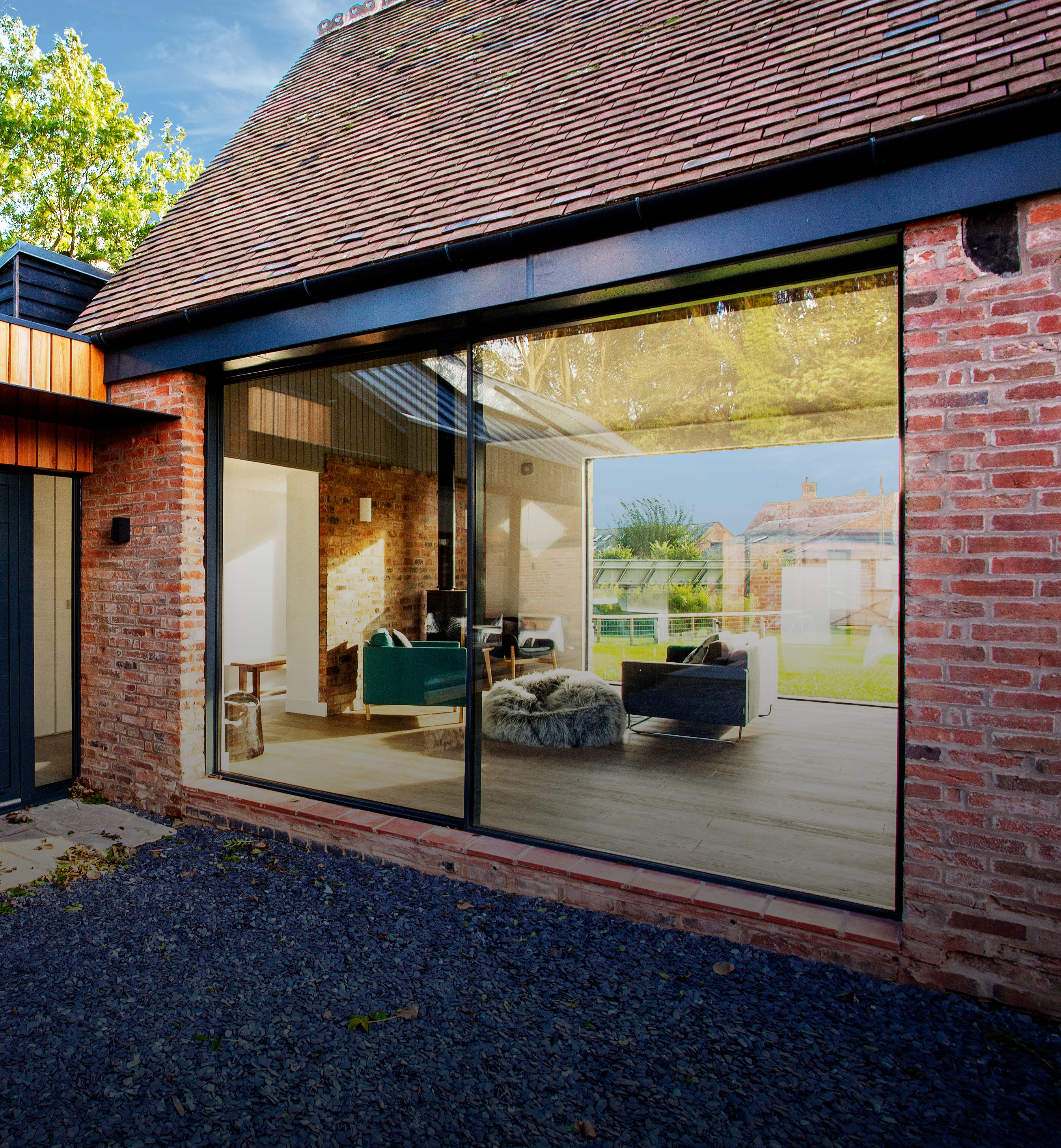
Sliding patio door costs
What you will pay for your sliding doors is wholly down to the system you choose, including the material, size, configuration and glazing, plus the security options and the door hardware.
Expect to pay from around £950sq m for a sliding door from IDSystems, including installation. The starting price for a sliding door from Express Bi-Folding Doors would be just over £4,000 including VAT and installation.
"The starting price for a set of sliding doors will vary greatly depending on the product," says Victoria Brocklesby. "Factors including quality, glazing, material and size will all contribute to the overall cost. At Origin, our sliding doors start from £4,200 (including VAT)."
"While it may seem to be a way of potentially saving money, buying cheaper sliding door systems comes with risks and, given that the doors are one of the most visible elements of the finished home, it is probably the last area you should be looking to cut back on," adds Edward Stobart.
"A high-quality system, supplied and installed by an experienced manufacturer should provide you with trouble-free use for years to come. The starting price of sliding doors depends dramatically on the system you choose, but the old adage that “you get what you pay for” has never been more true."
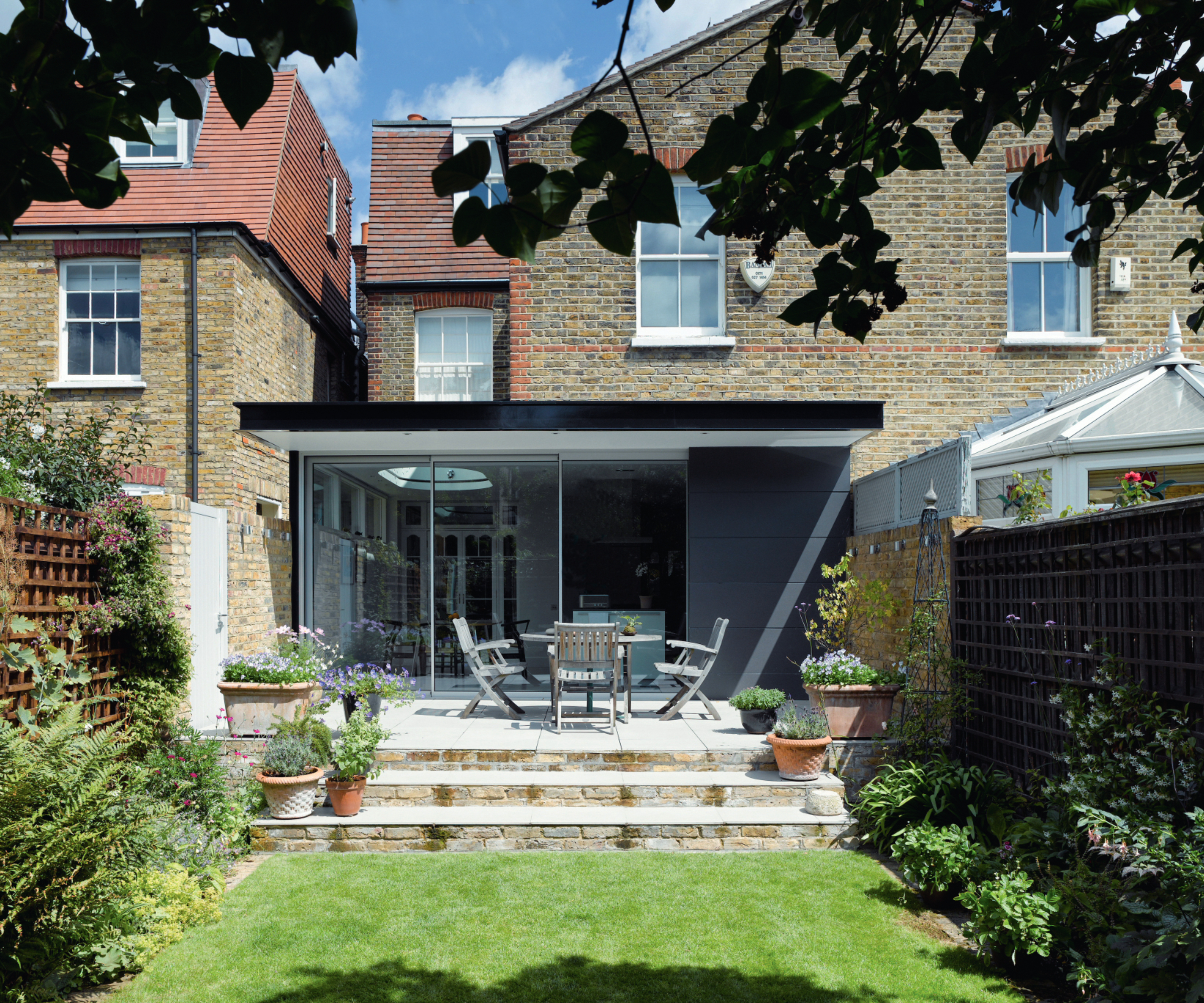
FAQs
What is a thermal break in sliding doors?
When choosing sliding patio doors you will probably see the term ‘thermal break’ used. A thermal break is used to avoid cold bridging (where warm air from outside comes into contact with the cold surface of the door frame) causing condensation. This used to be a particular issue with aluminium patio doors or composite sliding doors as aluminium is a conductor of heat, rather than an insulator.
For this reason, good quality sliding patio doors with aluminium in their construction should feature a thermal break. This is a material with low thermal conductivity, positioned to separate the interior and exterior sides of the frames to prevent or reduce the conduction of thermal energy.
How easy is it to maintain sliding patio doors?
The maintenance required when it comes to sliding doors largely depends on the material you opt for.
In the case of timber sliding patio doors, the maintenance required will vary according to how your particular doors come supplied. With any luck, you will have chosen doors that come primed and finished, ready to be installed. Depending on the paint finish or stain you choose, timber doors may require periodic maintenance if they have begun to flake or become chipped.
Aluminium and composite sliding patio doors require very little maintenance – a wipe down with a mild soap solution should be all that is required.
In all cases, it pays to check that the tracks and seals remain clear and free from dirt and debris at all times.
What is the difference between sliding patio doors and French doors?
French doors are a classic choice for those after a patio door to complement a more traditional style of home. They are often affordable, simple to fit and can be installed in conjunction with sidelights to either side to increase the glazed area.
On the downside, unlike sliding patio doors, they require outswing space and have a raised threshold.
Innovation is never far away when it comes to glazed doors, so if you are looking for something with an extra bit of edge when considering contemporary home design, there are also several alternatives to the norm.
IDSystems’ award-winning vistaline slide-and-turn doors bridge the gap between sliding and bifold doors and are designed with narrow sightlines like ordinary sliding doors, but, the panels slide on a single track before turning and stacking beside the lead door. Another product that pushes the boundaries is IQ Glass’s curved sliding glass doors. Both an architectural statement and a lesson in elegance, the system creates a flowing contour of glass that can be specified as automated and can include solar control glazing.
For more inspiration on how windows and doors can truly transform your home, also ready our guide to architectural glazing and consider these internal window ideas to help spread light inside your home.
Seán is an experienced writer with a specialism in homes journalism. He was formerly Chirf Sub of Elle Decoration & Practical Parenting, then Associate Editor of 25 Beautiful Homes magazine. Since 2016, he has been a freelance writer and editor specialising in interiors magazines inc. Living Etc, Homes & Gardens, 25 Beautiful Homes and Homebuilding & Renovating.
